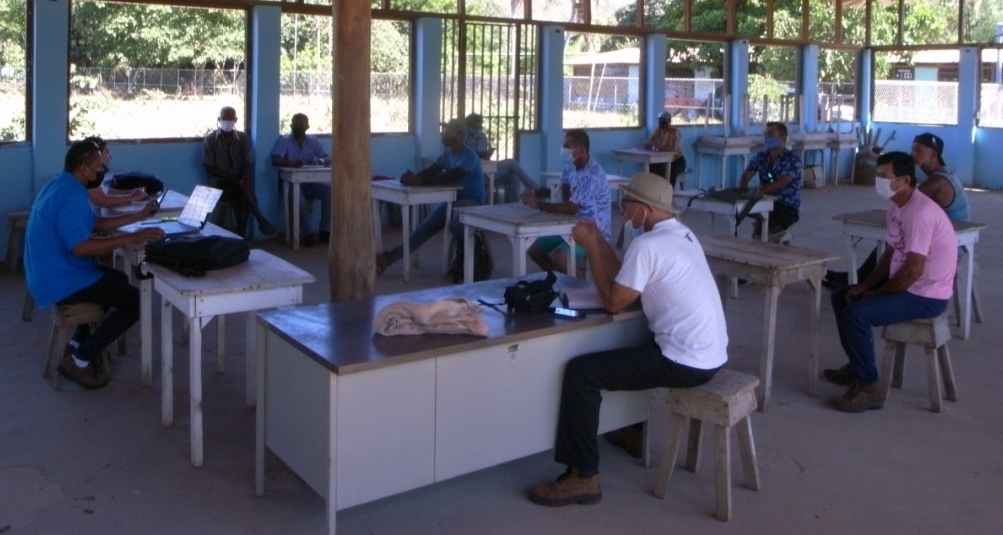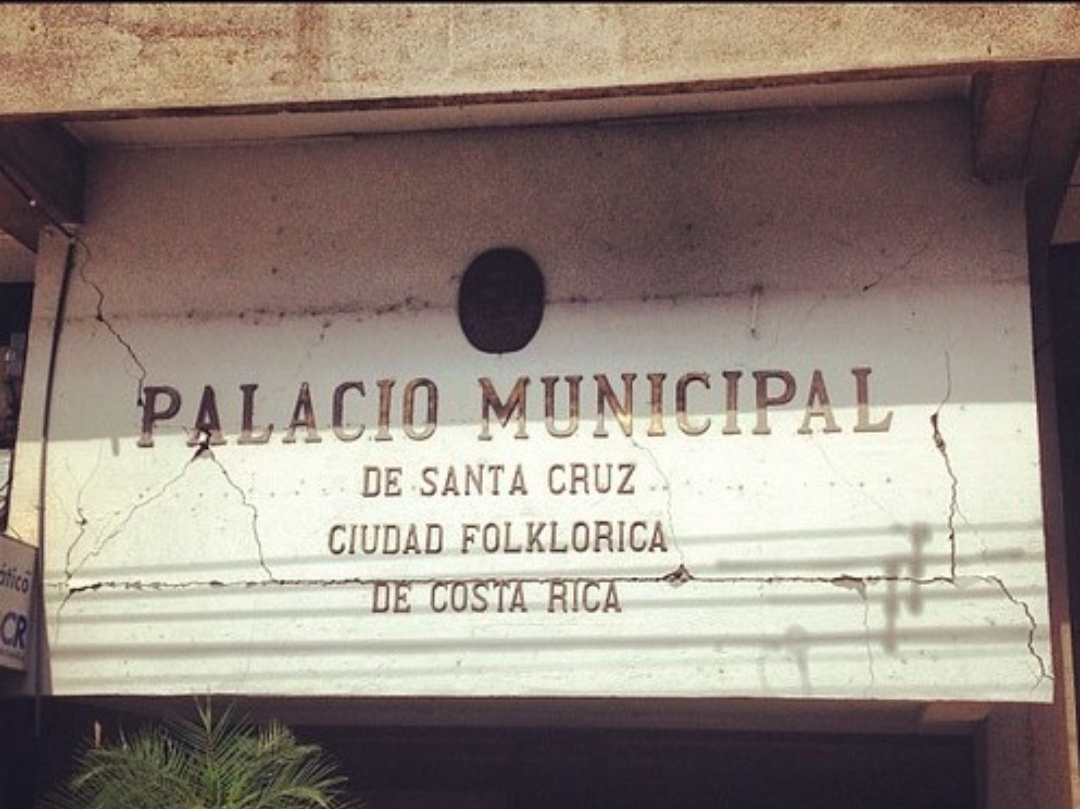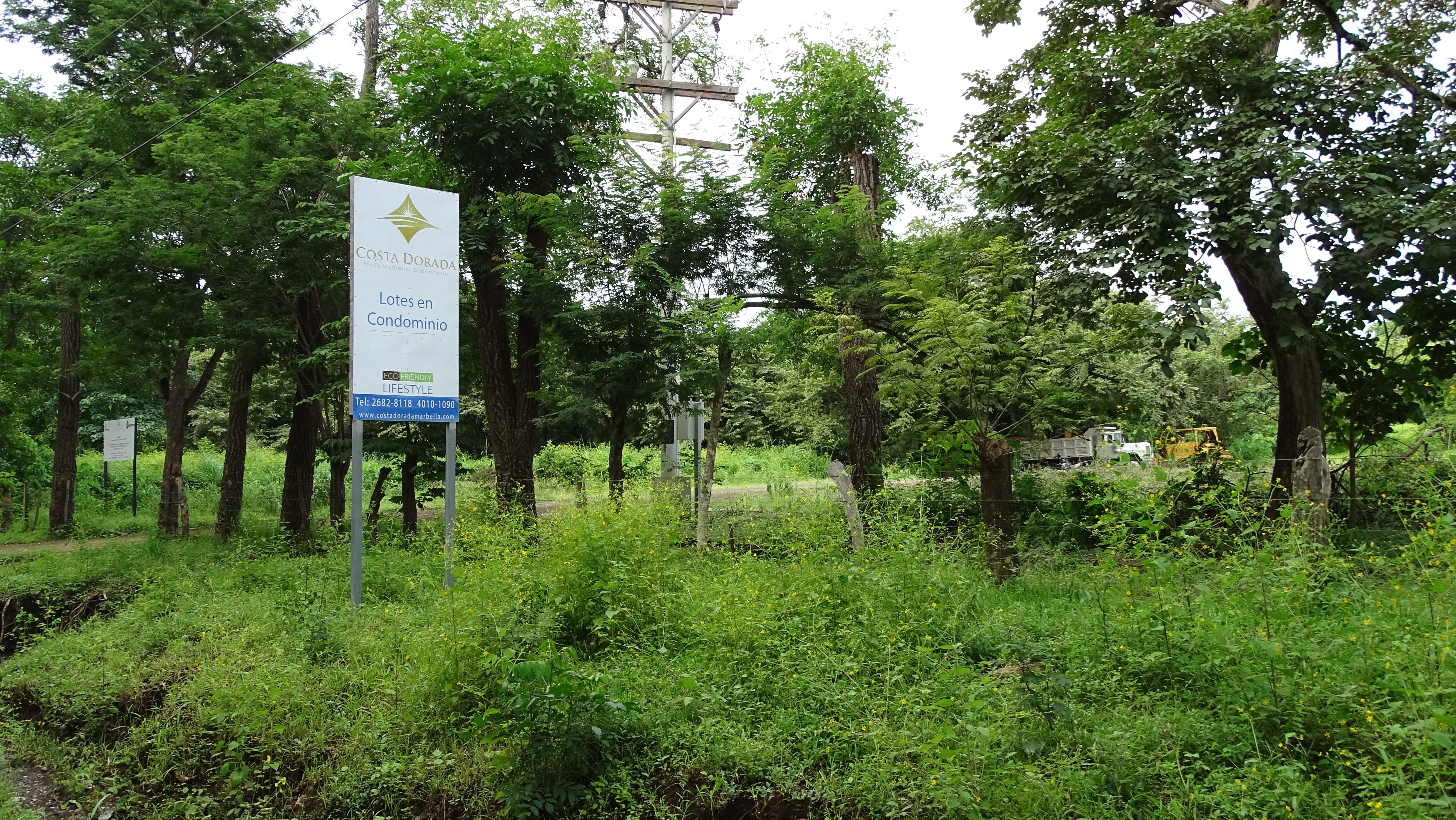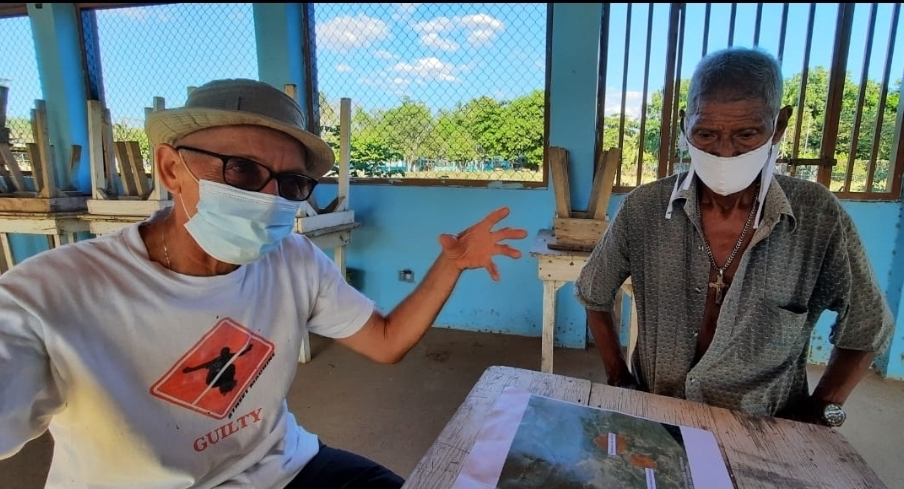26-03-2021
Marbella (Costa Rica): Testimonies of a tourist conflict in Guanacaste
Arturo Silva Lucas | Alba SudIn a case that we have been monitoring for a long time, Alba Sud made a tour of Playa Marbella, Guanacaste, to find out what progress or decline has been in the conflict between the community and real estate developments.

The appropriation carried out by large tourist-residential investments in Playa Marbella continues its march. In a previous article we described how real estate developers operate in pristine destinations and why Playa Marbella is a synthesis of the tourist conflict that is currently taking place in Guanacaste. In Marbella there is an accelerated process of land grabbing by real estate agencies; private management of water to supply real estate projects; irresolution of public institutions and interference in community decisions.
Located in the canton of Santa Cruz, Marbella appears at the beginning of the 21st century as a new frontier conducive to real estate speculation. Since 2016 neighbors, local organizations and various media have pointed out anomalies when granting land concessions, construction permits and drinking water management; as well as complaints about the destruction of mangroves. As a result, real estate groups in the community have carried out smear campaigns and threats to dissenting voices with this model of tourism development.
In this context, public institutions have once again failed to achieve a quick solution, in accordance with the Costa Rican legal system. The same mistakes that have occurred on other beaches in the province are repeated, that led to questioning what interests prevail in the public administration in coastal destinations.
On a recent tour of the area, Alba Sud was able to follow up on the situation. The M.Sc. Gustavo Jiménez Barboza, consultant and researcher in urban studies. Invited by the community, we were present at a meeting called by the Costa Rican Institute of Aqueducts and Sewers (AyA) in which the lack of drinking water for the historic inhabitants was discussed. Also, we learned what progress has been made in the complaints made to the Municipality of Santa Cruz about constructions in the Maritime Terrestrial Zone (ZMT). Finally, we spoke with older adults to get their perspective on how Marbella has changed and what impacts real estate investments have had on the community.
Water for what and water for whom?
In Marbella, water management has been a problem since large residential complexes came to the community. Private control of drinking water has been made possible by the irregular administration of the rural aqueduct (ASADA) by real estate agencies, while illegal wells are drilled within real estate projects.
The president of the real estate agency Marbella Group Developers, Jeffrey Allen, responsible for the Posada del Sol, Vista Bella, Costa Dorada, Ruta del Sol residential developments, came to preside at the same time the two ASADAS of the community between 2007 and 2019. This allowed him to grant to his own projects water availability letters without any technical study involved until AyA took control of the ASADAS. In the complaint filed by AyA, of which a copy is available, delivered to the Prosecutor's Office in March 2019, there is evidence of a conflict of interest. It describes how Allen operated through networks of corporations and front men. The possible crimes that are indicated are eleven, among the most serious illicit enrichment, influence peddling and use of false documents.

Source: Ernest Cañada | Alba Sud.
In the same vein, Antonio Marvez, head of the Lomas del Sol and Jardines del Sol residential complexes is being investigated for the crime of usurpation of water by the Environmental Prosecutor of Guanacaste. In file 17-001221-0412-PE, he is charged with supplying illegal wells within the aforementioned residential complexes.
In this context, together with the urgency of residents of the Manzanillo and Veracruz neighborhoods who do not have potable water service, was the reason why the community held a meeting with AyA. The appointment was held on March 12 in the Community Hall of Marbella. The AyA was attended by Alejandro Contreras, from the Regional Office, and Andrea Chacón, from the Legal Department.
The community, represented by the Marbella Integral Development Association (ADIM), was emphatic in pointing out how even though in residential complexes there is water supply even for swimming pools, there is no water for communal use. ADIM proposed that, if necessary, there are native neighbors willing to donate land for wells and labor to meet the water need. However, this option is not viable at the moment. As Andrea Chacón explained, AyA depend on ideal hydrological conditions, salinization risks and above all because “… the vast majority of land in Marbella is private, in some cases it is people who do not reside in the country and it is not like people want give up their land to give water”. The problem is that currently the ideal land are those where real estate developments are located, which forces AyA to have to negotiate and, if necessary, buy land from absent owners.
Thus, for example, in one of the wells in the Lomas del Sol residential area, linked to Antonio Marvez, AyA recognizes that there are illegal wells, but that it is only used to supply that sector. Chacón explained that "... we as AyA also have to solve those people who have houses built there because of a situation that is not ours but the one who built ...". When asked what would happen to all the other illegal wells, Chacón replied: “AyA does not have the legal competence to close wells, only the Water Directorate” [1]. Another example is a well in Posada del Sol, owned by Jeffrey Allen, whom AyA has denounced for irregular management of communal ASADAS for more than ten years, which, as they explained at the same meeting, was a donation to AyA and is the only well that currently supplies the local population.

Source: Arturo Silva.
Chacón was explicit in stating that "at this time AyA does not have water to expand the service to Manzanillo and Veracruz", but they are looking for other sources of water. While the service continues in residential projects, it is evident that building and extracting water illegally in Marbella does not have major consequences, it can even be favorable for the developer, because eventually they can sell the land back to AyA. By the end of the meeting, an agreement was reached to form a working commission between the community and AyA to follow up on the issue.
Another key point in the meeting was the role played by the Municipality of Santa Cruz in this situation. Alejandro Contreras, from the AyA Regional Office, after referring to the promise of work that residential tourism will bring, said that "their participation is urgent given the lack of planning in the canton." Contreras mentioned that, to estimate the community's water demand, in 2019 AyA requested construction permits from the municipality and ensures that "we found an equivalent to 7 times the current population of Marbella." Over the years, the Municipality of Santa Cruz has not only been pointed out deficiencies in planning and territorial management, but also in administrative matters. As evidence of the latter, the Costa Rican Ecologist Federation (FECON) has filed three complaints for improper use of the ZMT.
"The muni in its labyrinth ..."
The feeling of impunity is perennial in the community. After the meeting, some locals pointed out the absence of the Municipality of Santa Cruz at the meeting. There is great concern, mainly because they do not feel responsibility in water management, and this extends to the reaction capacity of the local government. One of the people whose name is omitted to avoid possible reprisals, told us: “Look… putting papers in the muni is like putting them in Pan's Labyrinth. Who knows if they are going to attend an issue today, tomorrow or in a year, or if is going to be shelved. There is a lot of money, interests… things that one does not really know how it works”.
Such is the case of the Tikki Hut restaurant, built by Jeffrey Allen. Because it is located in the first 200 meters of coastline, the municipal concession must follow an administrative protocol that certifies environmental protection and direct benefit for the communities. In support of the community, which since 2016 has been denied documents evidencing the due process to award the concession, FECON made its appearance in Marbella.

Source: Arturo Silva.
Since December 18, 2020, FECON filed three complaints in relation to the Tikki Hut restaurant. The complaints refer to the electric lighting, the construction of the access bridge and the restaurant itself. In the last pronouncement of the Constitutional Chamber on the subject, file 21-003356-0007-CO of March 12, 2021, it indicates that the actions of the municipality represent a “violation of the right to prompt administrative justice, access to information and of request and prompt response, to the detriment of the environment”. From the ruling of the Chamber, it can be inferred that the municipality deliberately hides information behind unnecessary consultations with its legal, environmental and ZMT departments, as if they were separate institutions.
The document indicates that the complaint should "be processed in a specific department in attention to the principle of coordination, it should have been transferred ex officio within the municipality itself and not simply indicate to the complainant who it corresponds to." Since the questioning began, the Chamber shows that "... it is not indicated whether any municipal action has been carried out in areas to verify or discard the alleged irregularities reported -constructions-". Also points out the silence of the municipality "they did not pronounce on the request for the order for the closure and demolition of works, nor whether the intended documents were delivered." In the pronouncement, the Chamber gives a month for the requested documentation to be made public.
In Marbella, the strategic control of water is linked to land possession, but while the AyA finds new sources of water and the municipality manages to find the correct department, there is a story at ground level that deserves to be told. A story that tells how Marbella has changed over the years.
Land rush: #LandForSale
Don Roberto Gómez and Don Pablo Gutiérrez are two natives marbellans. In Costa Rica its customary to use "don" to refer to older people as a sign of respect. Don Roberto, 63 years old, warns us that his white complexion and blue eyes come from a Spanish strain that refuses to disappear. Don Pablo, of 75, tells us that his family brought him from Nicoya when he was 7 months old, although he never knew why. With the help of a map, we talked with them about the changes that have happened in Marbella in the last twenty years. What Marbella was like before, how the land fever started and what is its relationship with the real estate sector.

Source: Ernest Cañada | Alba Sud.
Before the tourist-real estate explosion, Marbella was the land of large estates, owned by some Guanacaste families who did not reside in the town. The few resident families, such as those of Don Roberto and Don Pablo, lived on small farms for self-consumption: "When I was about fifteen years old, we lived by planting corn, clearing, flying ax, planting rice, beans and fattening pigs," recalled don Pablo. After, don Roberto explained his connection with the cattle in these lands: "I was born among cattle by inheritance, tradition, but the day I die, this cattle thing ends, because my children are already in something else."
As in the rest of Guanacaste, in Marbella the residential tourism boom made its appearance at the beginning of the 21st century. Don Roberto remembers that not-so-distant moment: “around 2000, it started here… Jeff [Jeffrey Allen] was the first, he was the one who came to exploit the tourist richness that Marbella has. Why? Because Jeff bought here, he bought there, he bought everything. " Later, some construction workers told us that the land where Jeffrey Allen's Posada del Sol is today, is a 120-hectare property purchased for $ 160,000, that is, $ 0.50 per m². At the turn of the century, Marbella was a mine if you had access to a little capital, don Pablo recalls that “what they were given for the land was filthy. Imagine that a farm he bought for 18 thousand dollars and then he sold each lot for the same amount”.
During the conversation we had with these two locals, we asked them about the relationship they establish with foreign second homeowners. According to don Roberto, its distant, “there are people in the projects that you don't know, they pass by throwing dust, if they can, they throw the car at you… haha. But the developers are the ones looking to talk to us”. Due to the type of offer, it is common for a significant number of residences to go empty most of the year, but that does not mean that the landlord does not continue to collect maintenance or rental expenses. An amount that can be around 200 and 500 dollars a month for each house.
Don Roberto and don Pablo have had some experiences with foreigners who wanted to buy their land. But they have not wanted to sell because they have seen the tragedy that it has caused some of their neighbors who previously sold their land, because they don’t know what to do with the money. "Then you see that they sell, they go to live somewhere else and after a while you see them come back without money, to live with a relative," don Pablo tells us.

Source: Arturo Silva.
In the opinion of the two men, they recognize two good things have been brought by the developers, such as, for example, donations that appear from time to time in the community. Mostly since the press echoed all the aforementioned irregularities. The job offer has also improved, specifically that which has to do with construction labor.
Myths and lies
Playa Marbella is evidence of the process to which many local communities are subjected in the first stages of residential tourism investment. As in most of the provincial coast, in Marbella real estate speculation reigns. That is why it is possible to recognize monopolistic practices that contradict any dogma, it is easy to recognize how real estate developers like Jeffrey Allen have taken control of these communities. To the point that questioned real estate developers dictate to AyA if they want to provide water for the community.
What solutions do directly linked institutions have? None that solves a problem that is already structural. In the absence of adequate coordination and planning to encourage any option for the local economic fabric, what arises are proposals for commissions always between the community and institutions, never with developers, to resolve the water supply or the appropriation of public spaces such as the ZMT. All while the complaints are delayed in consultations and administrative processes.
Before talking about tourism, for Marbella we must talk about a land market that sells cheap and buys expensive, a private water market and a market for cheap labor. The growth curve of residential tourism is short because what it is about is a rentier economy concentrated in few owners that does not need a lot of labor to operate, except when the projects are built. The truth is that, in the absence of alternatives or support for local ventures, communities like Marbella are at the mercy of the highest bidder or, why not, at the mercy of public institutions.
